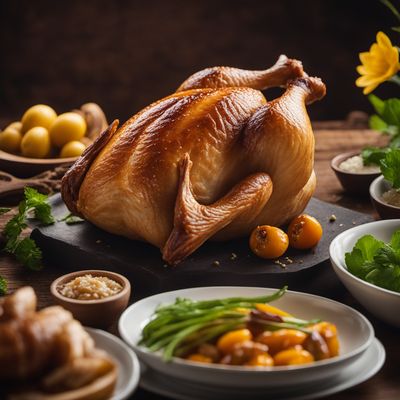
Ingredient
Turkey, other slaughtering products
The Versatile Delicacy: Exploring the World of Poultry
Turkey, along with other similar slaughtering products like chicken and duck, is a type of poultry that is highly versatile in the kitchen. It is known for its tender meat, mild flavor, and moist texture. Turkey meat is lean and low in fat, making it a healthier choice compared to other meats. Its appearance varies depending on the cut, with light to dark brown skin and pink to white flesh. The meat can be found in different forms, including whole birds, breasts, thighs, wings, and ground meat.
Origins and history
The domestication of turkeys can be traced back to ancient Mexico, where they were first domesticated by the indigenous people. Turkeys were later introduced to Europe by Spanish explorers in the 16th century. Since then, turkey has become an integral part of traditional American Thanksgiving feasts and is also enjoyed in various cuisines around the world.
Nutritional information
Turkey is a lean source of protein and is rich in essential nutrients such as iron, zinc, phosphorus, and B vitamins. It is also lower in calories and fat compared to other meats, making it a healthier choice for those watching their weight or cholesterol levels.
Allergens
Turkey may cause allergic reactions in individuals with poultry allergies.
How to select
When selecting turkey or other poultry products, look for fresh meat that is firm to the touch, with no signs of discoloration or unpleasant odor. If purchasing a whole bird, ensure that the skin is intact and free from any blemishes or tears. For ground turkey, choose packages that are well-sealed and refrigerated at the correct temperature.
Storage recommendations
Fresh turkey should be stored in the refrigerator at a temperature below 40°F (4°C). Cooked turkey can be stored in an airtight container in the refrigerator for up to 4 days. To extend its shelf life, turkey can be frozen for up to 6 months.
How to produce
Raising turkeys or other poultry products requires adequate space, proper feeding, and regular veterinary care. It is recommended to consult with local agricultural authorities or experienced farmers for detailed guidance on raising poultry.
Preparation tips
Turkey can be prepared using various cooking techniques such as roasting, grilling, frying, or braising. To ensure a moist and flavorful result, brining the turkey before cooking is recommended. It is important to cook turkey thoroughly to an internal temperature of 165°F (74°C) to ensure food safety. Turkey can be seasoned with a variety of herbs, spices, and marinades to enhance its flavor.
Substitutions
Chicken can be used as a substitute for turkey in most recipes, as they have similar flavor profiles and cooking characteristics.
Culinary uses
Turkey is commonly roasted for festive occasions like Thanksgiving and Christmas. It is also used in sandwiches, salads, soups, stews, and stir-fries. Ground turkey is a popular choice for making burgers, meatballs, and meatloaf.
Availability
Turkey and other poultry products are widely available in grocery stores, supermarkets, and butcher shops worldwide.

